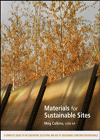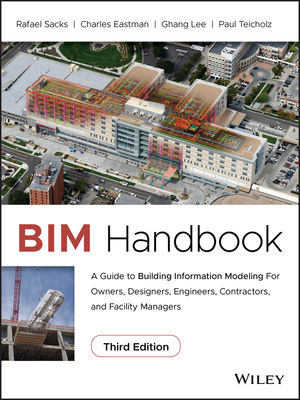By 1962, significant wet areas appeared on the downstream side of the dam. Although there was no instrumentation to monitor it, by 1967, "you couldn't mow sections of the embankment, it was so wet," says Haskins. "There were cattails growing—there's a tip-off." Sinkholes followed. The Corps measured seepage and injected the limestone with grout as it began designing more permanent repairs. "In two years, we placed 290,000 cubic feet of highly pressurized grout," says Haskins. Seepage temporarily stopped.
An independent board of consultants was brought in by the Corps to evaluate the foundation and recommend action, says Arturo Ressi, who was executive vice president of ICOS Corp. of America, the contractor on the $100-million job in 1976. The board recommended a concrete cutoff wall. But dissenting members of the board—led by the late civil engineer Ralph Peck—urged the Corps to extend the wall to the length of the embankment and well bellow the Leipers and Catheys limestone contact section, says Ressi. But Peck's admonitions were not heeded, and the wall was extended from the concrete portion of the dam only two-thirds of the way from the right abutment wall, says Ressi.
David Hendrix, manager on the current project, says the Corps' 1976 decision was not cost-driven. It was a technical decision, he says. "The rock was more competent out near the right abutment," Hendrix says. The current excavation has proven that to be true. Nevertheless, less than 20 years after the wall was finished, seepage appeared on the downstream side of the dam again.
The Challenge
"The old wall has 26-in.-dia, steel-encased primary piles," says Lust. But the steel primary piles and the concrete secant piles were not placed with sufficient vertical precision to seal out seepage. "The steel-to-concrete joints were a big problem," adds Lust. This time around, the Corps is using a more precise method to attain a better seal.
The new barrier wall lies upstream and parallel to the old wall but does not touch it. It maintains at least a 24-in.-thick barrier in all locations and extends 1,500 feet longer—3,800 ft in total—and deeper into the limestone than the old wall, down to a level "where there is less solutioning," says Zoccola. "Most of the wall is about 275 ft deep."
Two wall designs are used. The first is a series of 50-in. overlapping secant piles. The second is a combination wall comprising rectangular panels tied together by secant piles. "The combination wall was originally intended for 70% of the job," says Haskins. "It's now being used for 12% of the wall."
The joint venture discovered that the hydromill—a machine used to cut the panel swaths through the earth for the combination-wall construction—wasn't as effective in rock as expected. The contractor opted to use more overlapping secant piles. Fabio Santillan, the JV's project manager, says hydromills are now mostly used to excavate for a concrete embankment wall that is installed prior to the barrier wall itself.
Hendrix says the depths required and rock hardness make this foundation project unlike any other. "This is the most complicated foundation job being done in the world today," claims Santillan.
Construction of the barrier wall requires several steps of site preparation. In the $70-million first phase, grout was used to stabilize the embankment and create curtains on either side of the barrier-wall site. The curtains are formed by pressure-grouting in holes augered 12 ft on either side of the wall footprint at various intervals, depending on soil conditions. The curtains extend 50 ft below the barrier's foundation.
The hydromill, with a 6 x 9-ft-long cutter head, excavates the clay embankment, extending a minimum of two feet into bedrock, to build a protective concrete embankment wall (PCEW).
The work area is prepared for the hydromill by excavators with clamshells that produce a hole large enough to accept the machine's head. The hole is filled with a water-and-polymer slurry. The slurry keeps the cutter head cool, maintains hydrostatic pressure to hold the trench open and provides a medium for removing cuttings from the excavation, says Hendrix. The cuttings-laden slurry is cycled through pipelines to a treatment area where screens, shakers and a centrifuge remove debris before cycling the cleaned mixture back into the excavation. When the hole reaches final depth, pipes are lowered in and tremie concrete is gravity-fed through the 10-in. pipes. The concrete displaces the slurry, which is recovered for re-use.
"We don't intend to jeopardize the already-strong clay embankment," says Lust. The PCEW stabilizes the clay embankment and gives a solid grip to the directional drill, which bores 8-in. pilot holes through the cured concrete as construction of the final barrier wall begins. A 54-in.-dia auger excavates 60-ft-deep holes to accommodate 50-in-dia Aker Wirth drilling rigs, which cut into the bedrock to seat the piles of the wall foundation.
"The Wirth rig is a reverse-flow drill that operates similar to a tunnel-boring machine, only vertically," says Haskins. The business end of the drill is full of lead shot to weigh it down during drilling. The JV has five such rigs on the job.
The rigs' drilling frames are fitted with inclinometers to tell operators exactly where in the ground the frame is at any given time, says Santillan. The drill bit has a "stinger" that follows the pilot hole to a depth of 275 ft. Each rig has a small desanding plant for sifting the concrete and rock debris that is pumped out when the debris floats to the top of the slurry.


































